*NURSING > QUESTIONS & ANSWERS > APEA Test Bank 2|APEA Modules test bank questions (solutions) Latest 2020. (All)
APEA Test Bank 2|APEA Modules test bank questions (solutions) Latest 2020.
Document Content and Description Below
APEA Modules test bank questions 1. Question: Noninfectious epididymitis is common in: 2. Question: A 65 year-old patient has a firm, non-tender, symmetrical enlarged prostate gland on examination.... His PSA is 3.9 ng/mL. This probably indicates: 3. Question: What symptom listed below might be seen in a male patient with benign prostatic hyperplasia? 4. Question: A patient with testicular torsion will have a: 5. Question: What is the effect of digital rectal examination (DRE) on a male’s PSA (prostate specific antigen) level if it is measured on the same day as DRE? 6. Question: Which of the following results in a clinically insignificant increase in the prostate specific antigen (PSA)? 7. Question: 5-alpha-reductase inhibitors work by producing: 8. Question: A localized tumor in the prostate gland associated with early stage prostate cancer is likely to produce: 9. Question: A 22 year-old male who is otherwise healthy complains of scrotal pain. His pain has developed over the past 4 days. He is diagnosed with epididymitis. What is the most likely reason? 10. Question: Hesselbach’s triangle forms the landmark for: 11. Question: A 25 year-old male patient is training for a marathon. He reports an acute onset of scrotal pain after a 10 mile run. He has nausea and is found to have an asymmetric, high-riding testis on the right side. What should be suspected? 12. Question: A 70 year-old male presents to your clinic with a lump in his breast. How should this be evaluated? 13. Question: Digital rectal exam may be performed to assess the prostate gland. Which term does NOT describe a prostate gland that may have a tumor? 14. Question: Rechecked? 15. Question: A 50 year-old male comes to the nurse practitioner clinic for evaluation. He complains of fever 101F, chills, pelvic pain, and dysuria. He should be diagnosed with: 16. Question: The following PSA levels have been observed in a patient. What conclusion can be made following these annual readings? Year 1: 3.2 ng/mL Year 2: 3.8 ng/mL Year 3: 4.2 ng/mL 17. Question: What is the recommendation of American Cancer Society for initial screening of an African-American male for prostate cancer? 18. Question: What class of medications can be used to treat benign prostatic hyperplasia and provide immediate relief? 19. Question: A common presentation of an inguinal hernia is: 20. Question: Hematuria is not a common clinical manifestation in: 21. Question: What is American Cancer Society’s recommendation for prostate screening in a 70 year-old male? 22. Question: What is the recommendation from American Cancer Society for assessment of the prostate gland in a man who is 45 years old and of average risk for development of prostate cancer? He should have: 23. Question: A male patient has epididymitis. His most likely complaint will be: 24. Question: Which of the following medications should be avoided in a 65 year-old male with benign prostatic hyperplasia (BPH)? 25. Question: An elderly male patient is taking finasteride, a 5-alpha-reductase inhibitor. What affect might this have on his PSA level? 26. Question: What is the recommendation of American Cancer Society for screening an average risk 40 year-old Caucasian male for prostate cancer? 27. Question: According to ACS, Men should not be screened unless they have received this information. The discussion about screening should take place at: —————————————————- 1. Question: Which of the following is inconsistent with the description of benign prostatic hyperplasia (BPH)? 2. Question: When prescribing antihypertensive therapy for a man with BPH and hypertension, the NP considers that: 3. Question: When assessing a 78-year-old man with suspected BPH, the NP considers that: 4. Question: Which of the following medications can contribute to the development of acute urinary retention in an older man with BPH? 5. Question: A 78-year-old man presents with a 3-day history of new-onset fatigue and difficulty with bladder emptying. Examination reveals a distended bladder but is otherwise unremarkable. Blood urea nitrogen level is 88 mg/dL (31.4 mmol/L); creatinine level is 2.8 mg/dL (247.5 μmol/L). T he most likely diagnosis is: 6. Question: Surgical intervention in BPH should be … with all of the following except: 7. Question: Finasteride (Proscar, Propecia) and dutasteride (Avodart) are helpful in the treatment of BPH because of their effect on: 8. Question: Tamsulosin (Flomax) is helpful in the treatment of BPH because of its effect on: 9. Question: Concerning BPH, which of the following statements is true? 10. Question: Concerning herbal and nutritional therapies for BPH treatment, which of the following statements is false? 11. Question: You examine a 32-year-old man with chancroid and anticipate finding: 12. Question: All of the following are typical findings for a patient with chancroid except: 13. Question: The causative organism of chancroid is: 14. 14) Question: Treatment option for Chancroid includes includes all of the following except: 15. 15) Question: When ordering laboratory tests to confirm chancroid the NP considers that: ————————————————————– 1. Question: Age of Initial Cervical Screening 2. Question: Cervical Cancer 3. Question: When do we stop PAP? 4. Question: How often we screen for PAP? 5. Question: Discontinue pap 6. Question: Significant of T zone is where you find squamous cell dysplasia 7. Question: Colposcopy Indicated 8. Question: VULVOVAGINITIS 9. Question: A patient has been … with vulvovaginal candidiasis. Which choices listed below are predisposing factors? Select all that apply? Not number 4. mmunocompetence 10. Question: Patient symptoms: Normal (clear, white, odorless), PH: 4.0 to 4.5, Whiff: Negative, KOH: Negative 11. Question: Diagnostic Studies:Candiadias 12. Question: Management for Yeast or Candidias 13. Question: Topical agent 14. Question: Which treatment for vulvovaginal candidiasis relieves symptoms most rapidly? 15. Question: Atrophic vaginitis 16. Question: A 60 year old female has begun to have a small amount of blood escaping from the vagina. What is the most common cause of malignancy, when one is … ? 17. Question: Initially: Exam, EMB, US??? 18. Question: OSTEOPOROSIS 19. Question: Which T-score reflects a patient with osteopenia 20. Question: Osteoporosis Screening 21. Question: Oral Bisphosphonates Considered first line for most patients with osteoperosis 22. Question: Breast Masses 23. Question: Screening for breast ca 24. Question: Which choices below are causes of secondary dysmenorrhea? Select all that apply. 25. Question: A 17 year old female is HIV positive. What is the recommendation for cervical screening for her? 26. Question: Truck driver 27. Question: BENIGN PROSTATIC HYPERPLASIA 28. Question: At what age is the finding of benign prostatic hyperplasia most likely? 29. Question: Documentation should include the following for BPH: 30. Question: PSA 31. Question: What are the major causes of an … serum PSA? Select all that apply 32. Question: PSA Velocity = Rate of PSA change over time 33. Question: Management 34. Question: ACUTEPROSTATITIS(Think Bacterial, consider STI) 35. Question: Etiology 36. Question: Assessment Findings for Bacterial prostatitis 37. Question: Evaluation for acute prostatitis 38. Question: Why should “gentle” prostate exam be … in the setting of likely bacterial prostatitis? Select all that apply 39. Question: Management on bacterial prostatitis 40. Question: CHRONIC PROSTATITIS 41. Question: Most men who are … with prostate cancer present with: 42. Question: Assessment Findings 43. Question: Screening for prostate cancer is most beneficial in men who not have a life expectancy of < 10 years. 44. Question: American Cancer Society 45. Question: EPIDIDYMITIS 46. Question: Etiology of Epidymitis 47. Question: Epididymitis 48. Question: A 22 year old male patient presents with complaint of scrotal pain after a minor car accident. What must be part of the differential diagnosis? 49. Question: Which factor … below is NOT a risk factor for erectile dysfunction1. 50. Question: Why should “gentle” prostate exam be … in the setting of likely bacterial prostatitis? Select all that apply 51. Question: Management for acute prostatitis 52. Question: CHRONIC PROSTAT [Show More]
Last updated: 1 year ago
Preview 1 out of 50 pages
Instant download
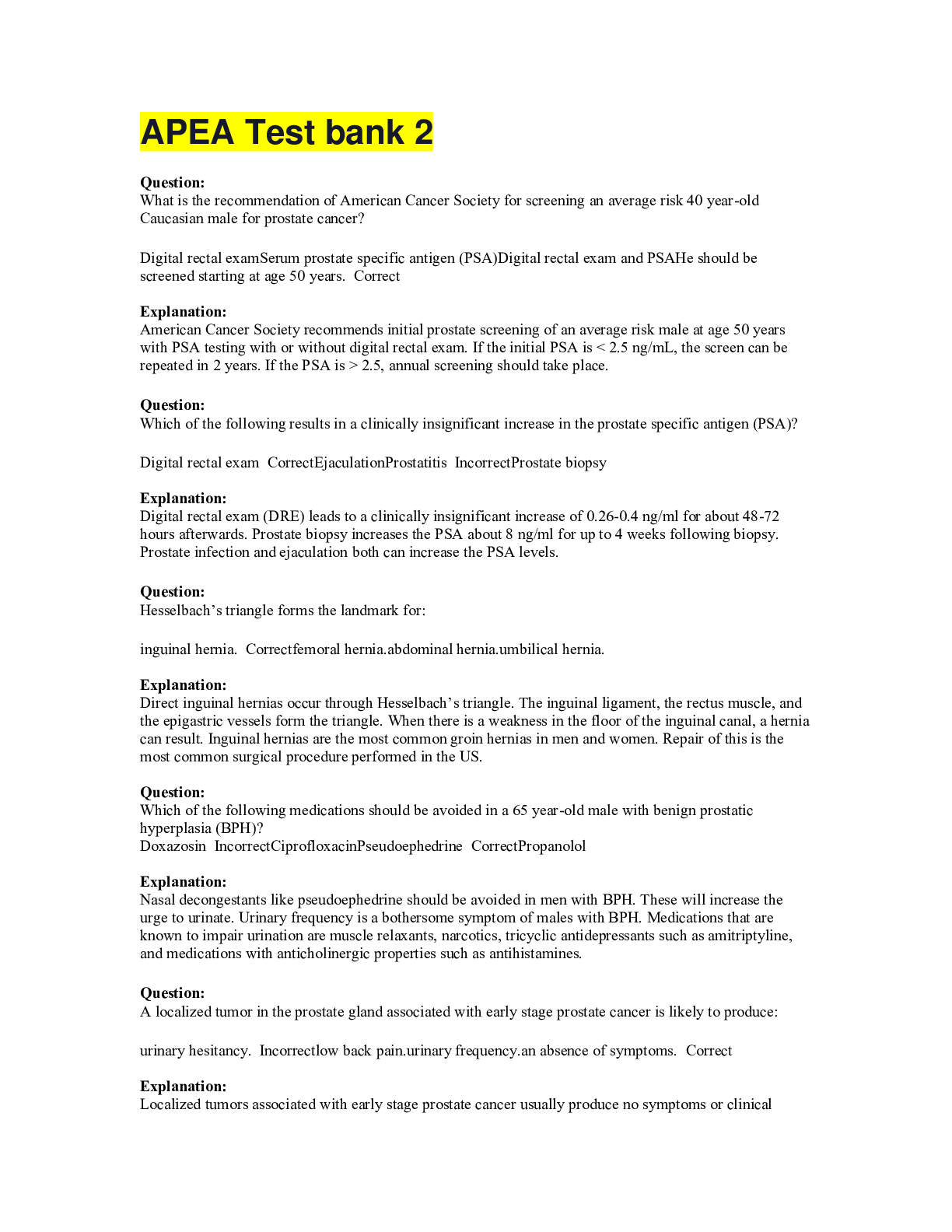
Buy this document to get the full access instantly
Instant Download Access after purchase
Add to cartInstant download
Reviews( 0 )
Document information
Connected school, study & course
About the document
Uploaded On
Aug 24, 2020
Number of pages
50
Written in
Additional information
This document has been written for:
Uploaded
Aug 24, 2020
Downloads
0
Views
30

.png)



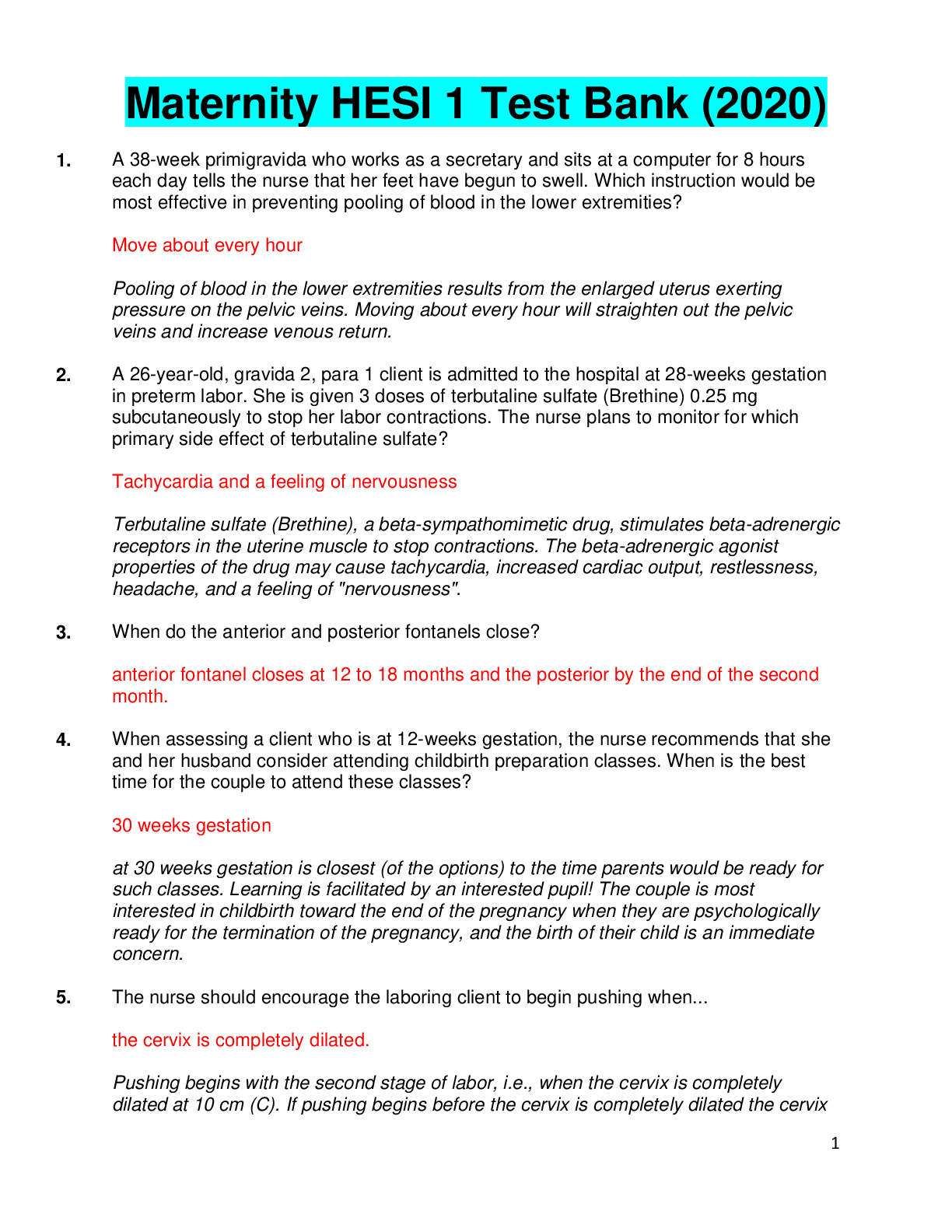

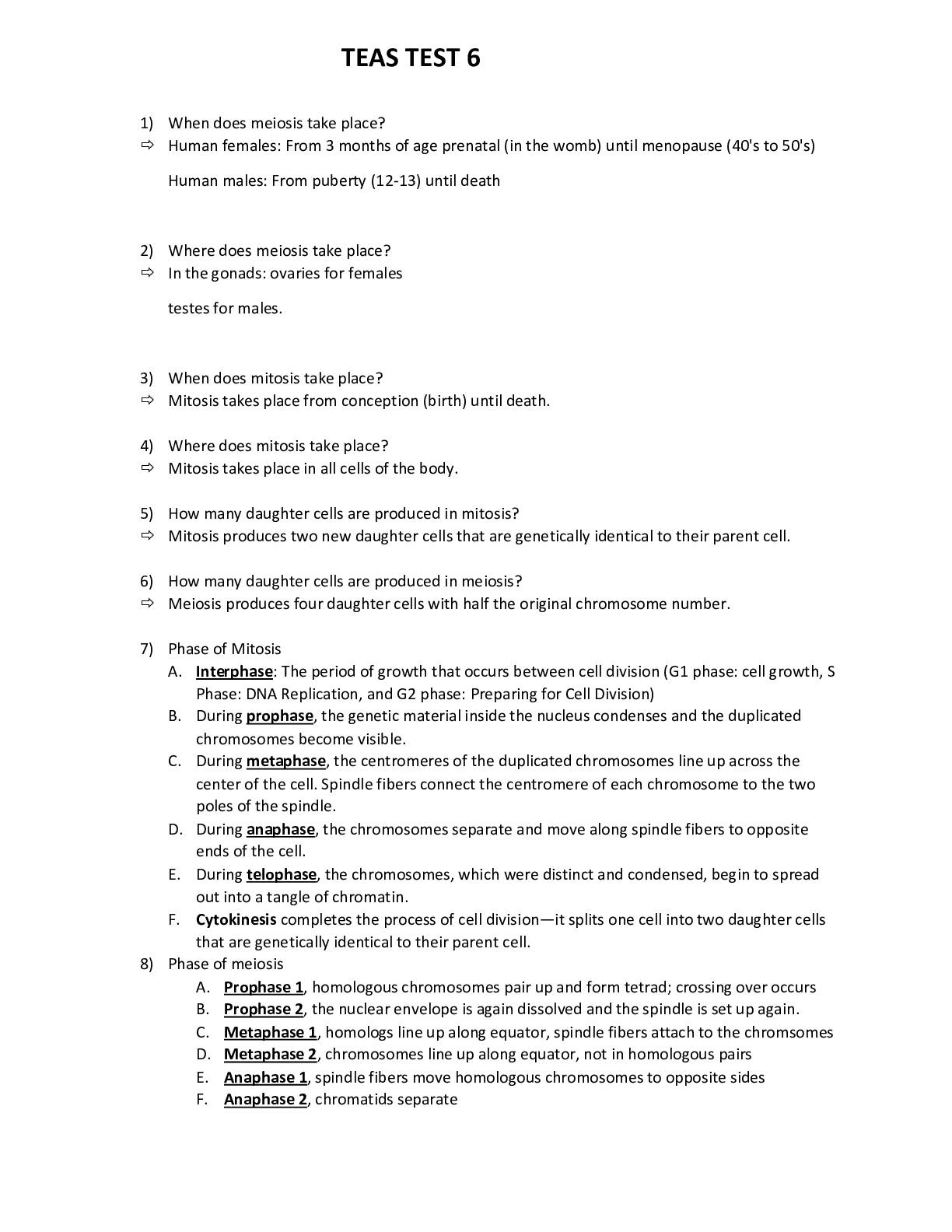
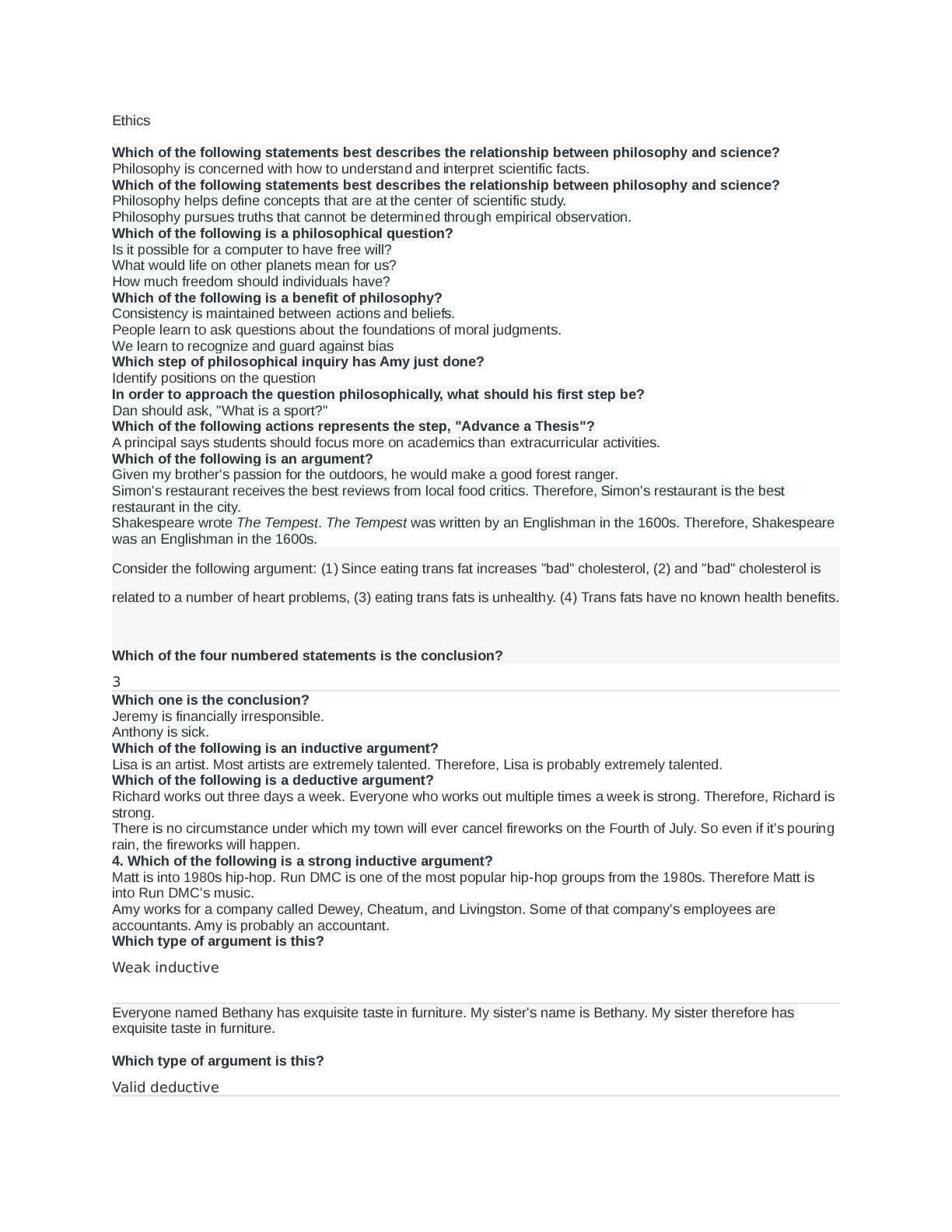


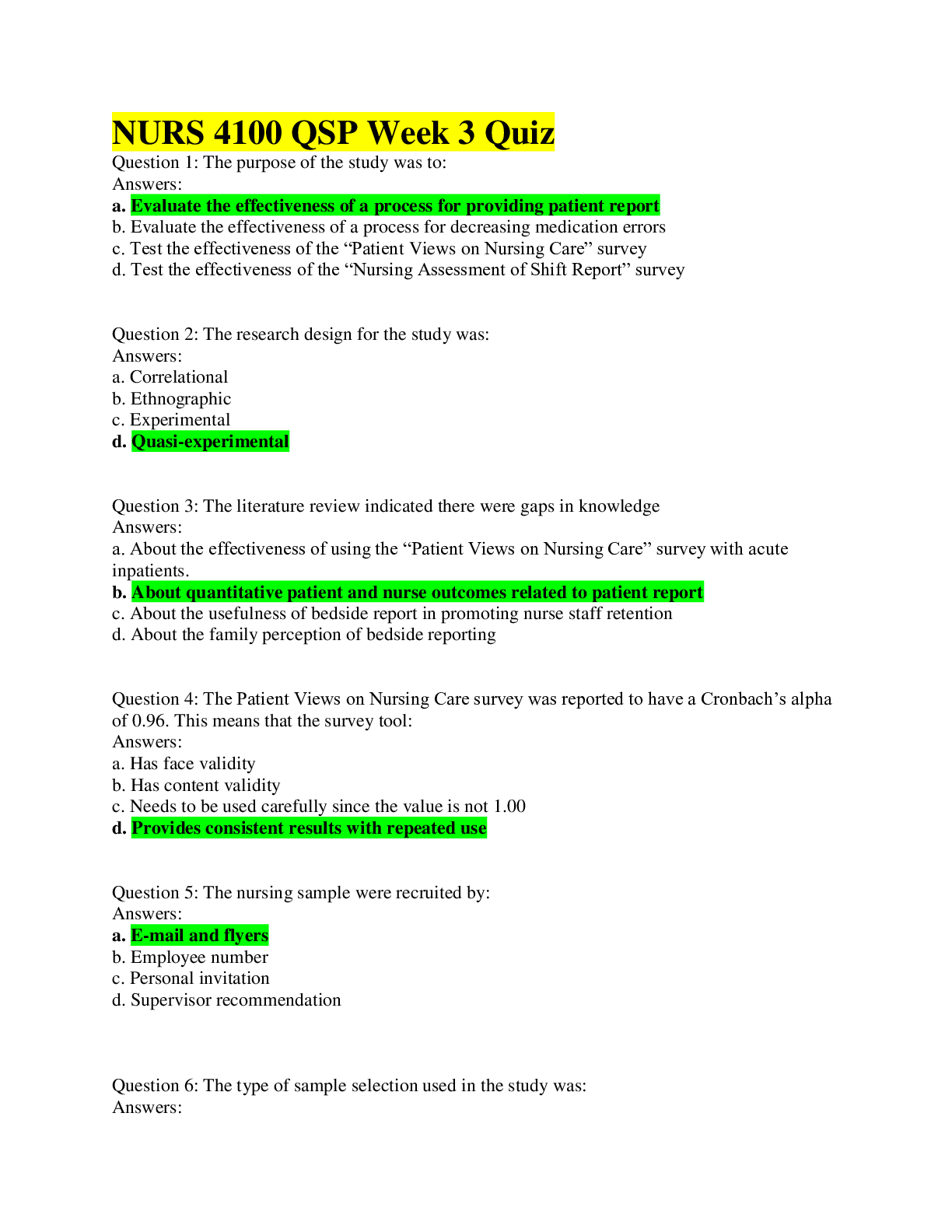
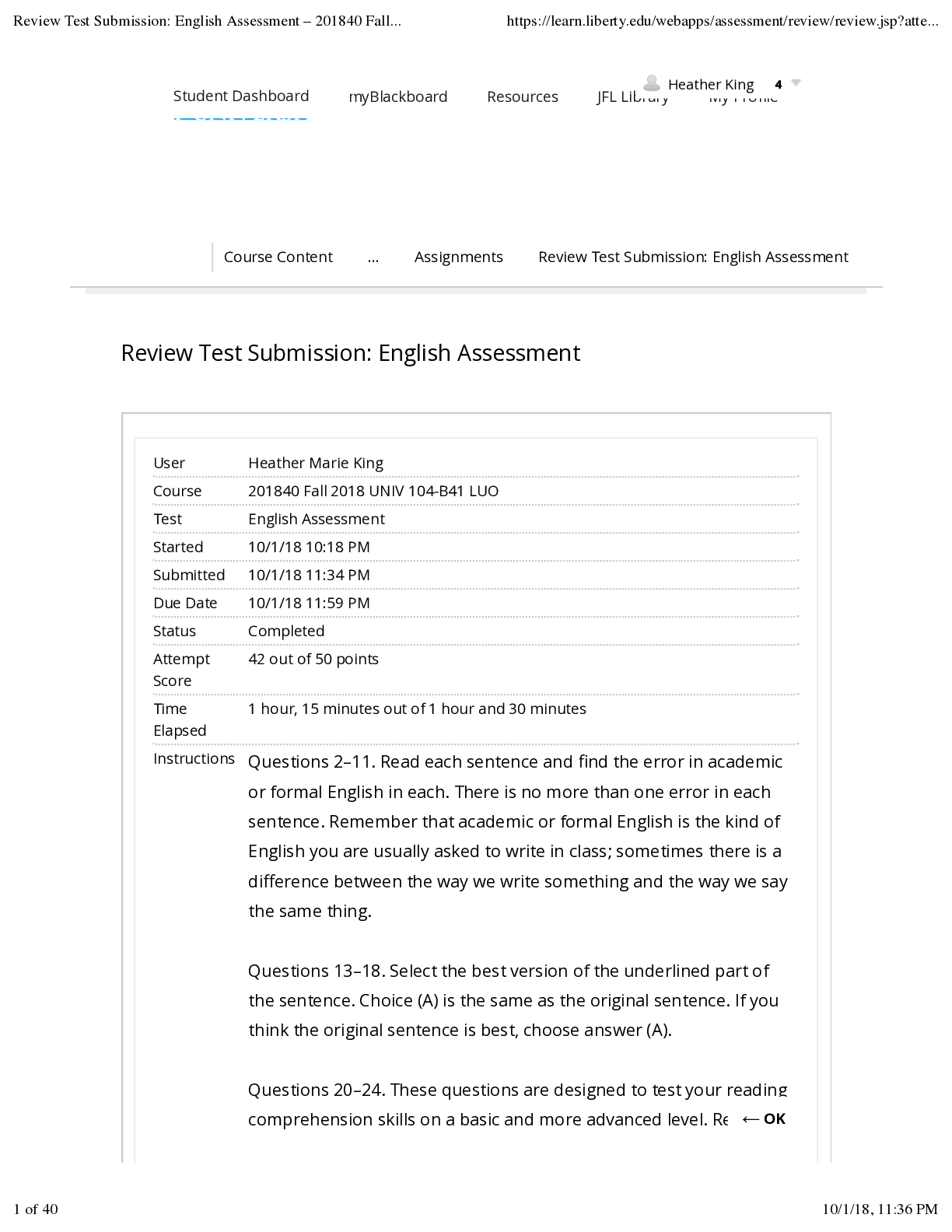
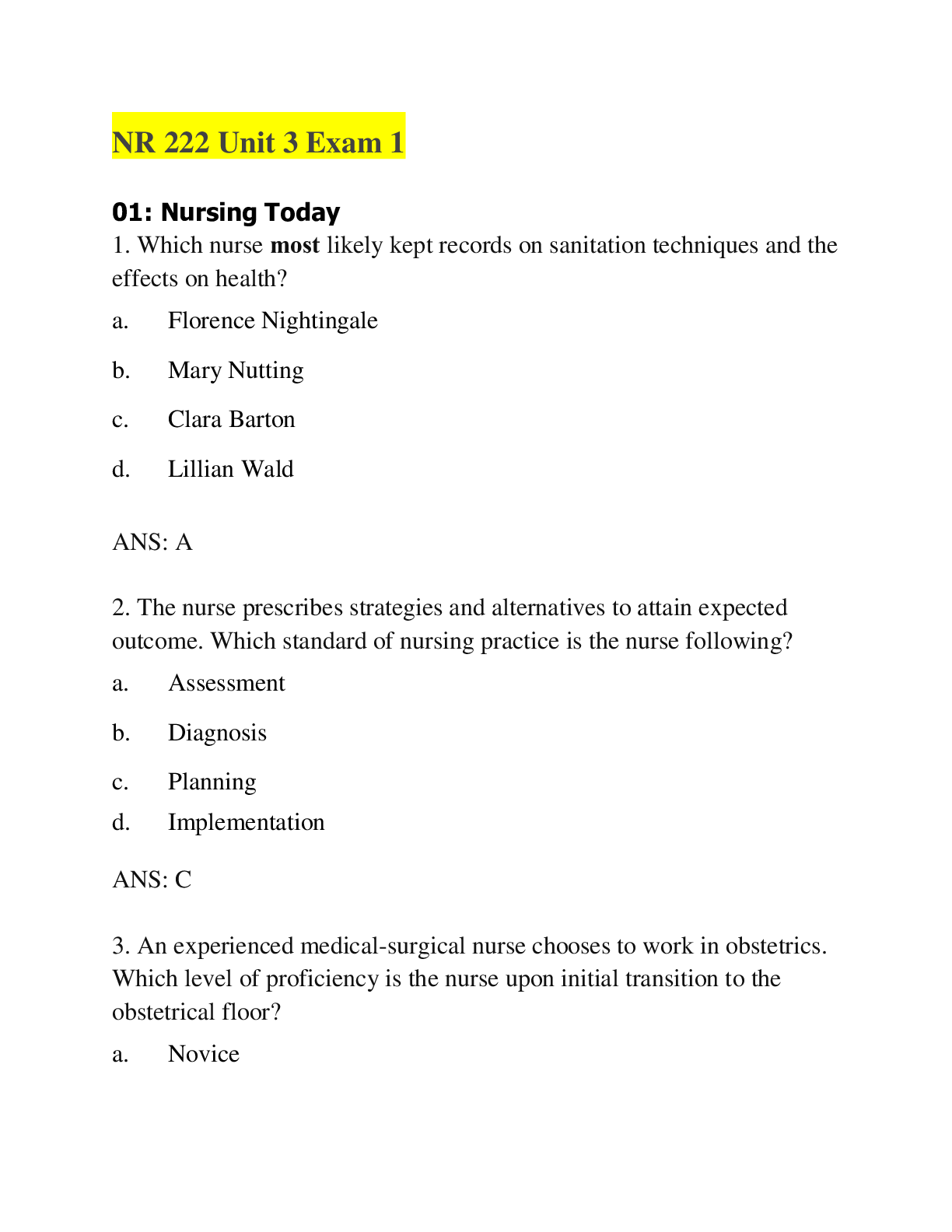
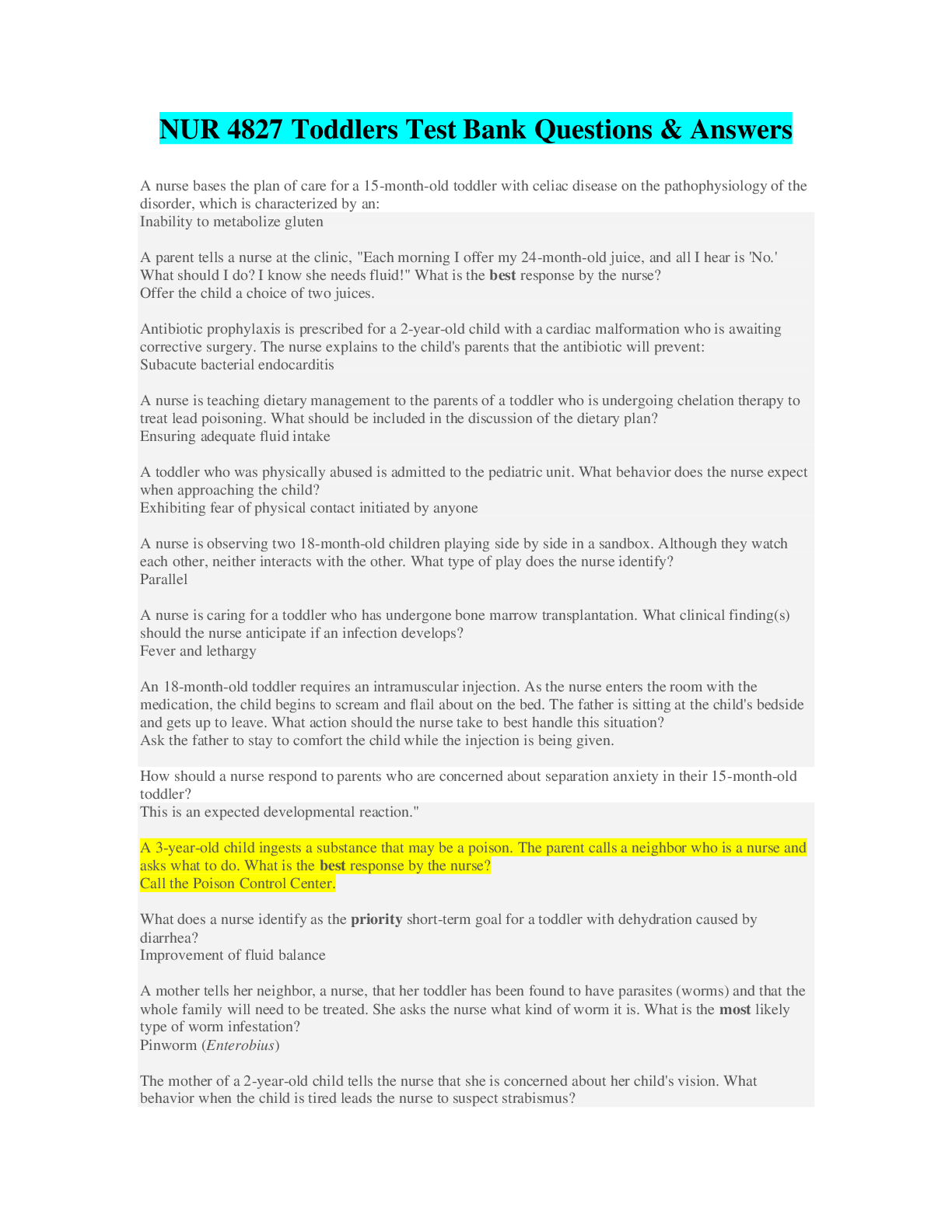
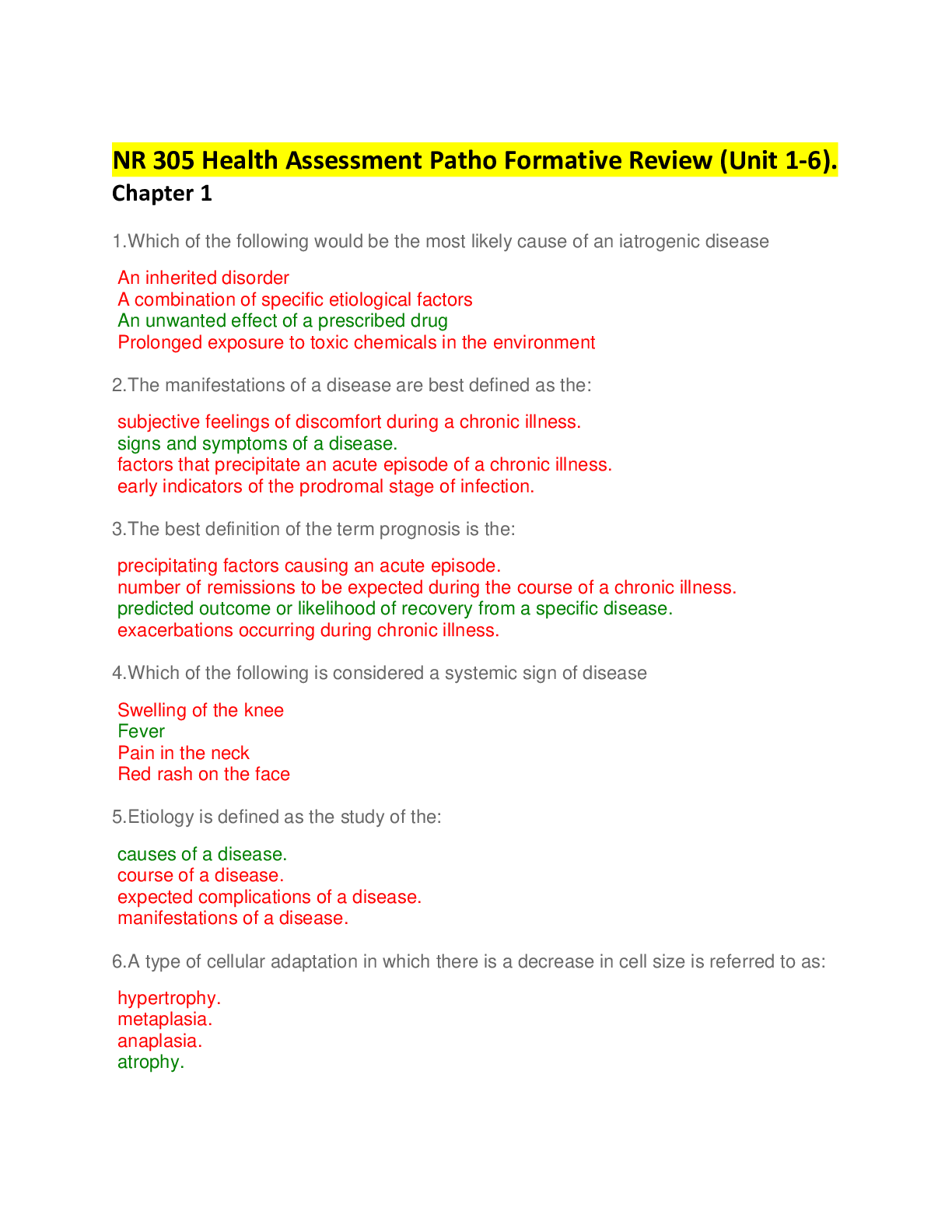
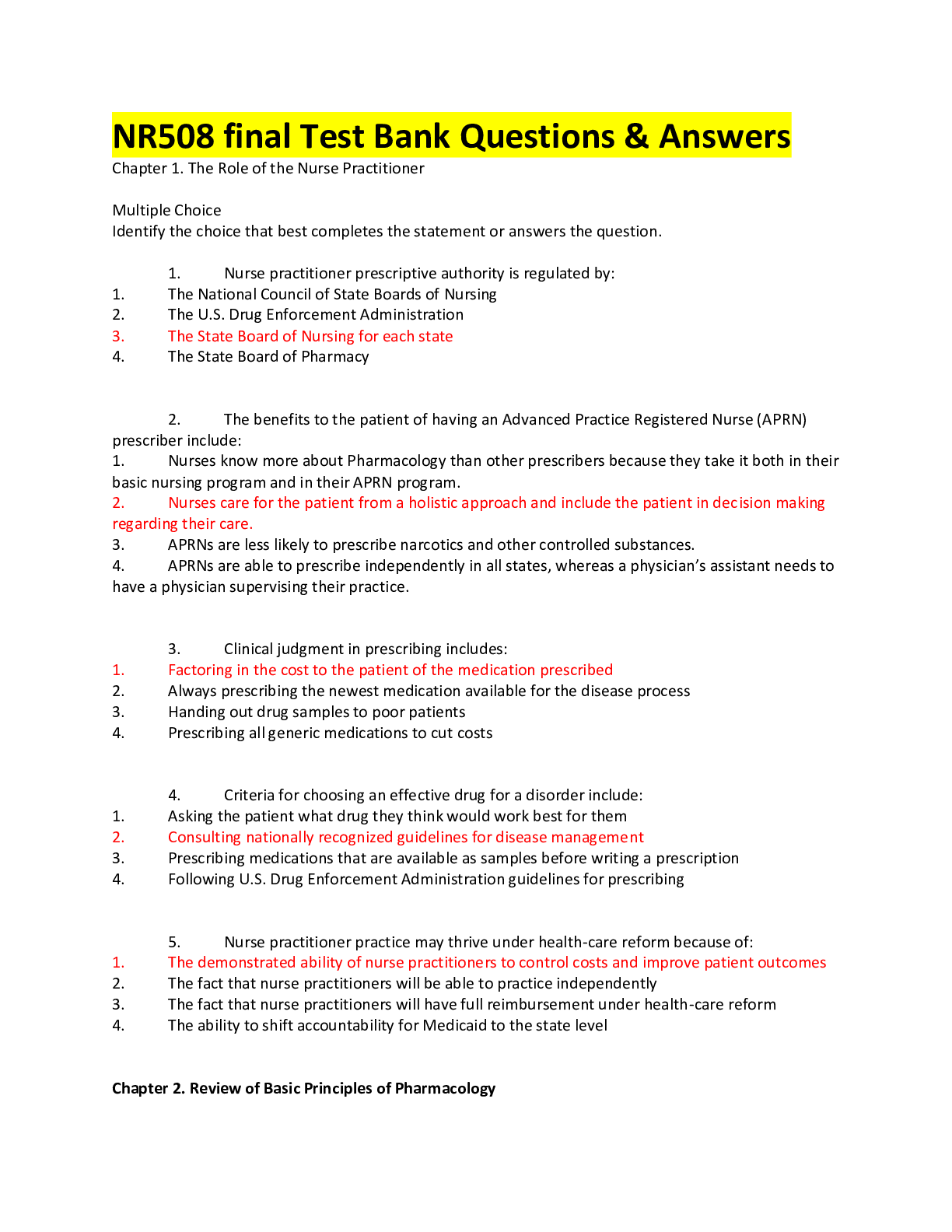




 ans.png)
, 100% Correct, Download to Score A.png)
, 100% Correct, Download to Score A.png)

